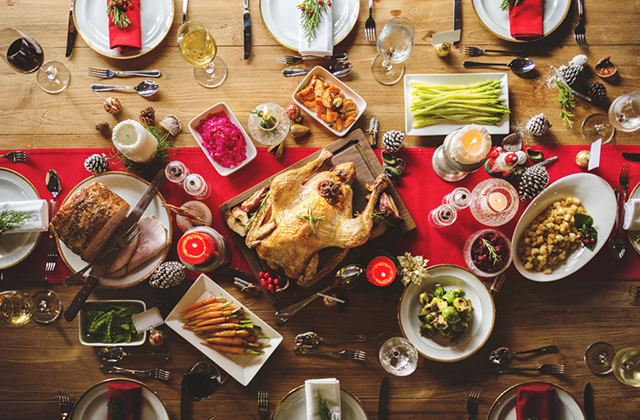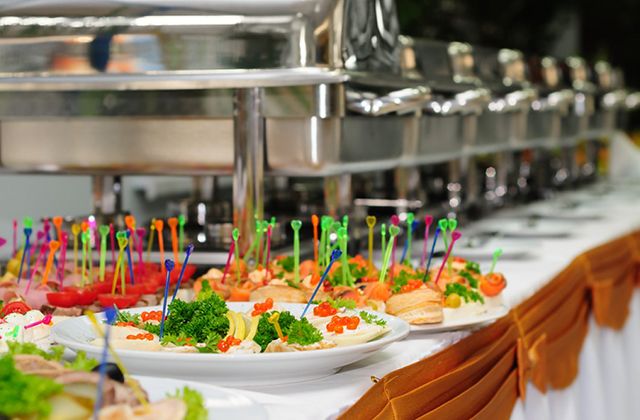
Before you sit down to put up a menu and put a price against each menu item, there are some important things to consider. You need to get all the information about the event, if possible, before starting with the catering preparation and pricing. The following pointers might help you in ensuring you have everything you need before you plan for the sourcing of ingredients and supply of food.
Place of the event (how far from your catering location, transportation options, whether there will be on-site catering, etc.)
Starting time and duration of the event
Expected turnout of guests
Guest preferences (if any)
Gather Competitive Intelligence
Once you have the above information, the best way to begin with the pricing estimate will be to scout the market rates for an event of a similar nature. This can be achieved with a few phone calls to some of the local catering companies. With this knowledge, you can be sure that you’re not going to quote above the market rates. In addition, while determining your own pricing strategy, you have a good yardstick so as not to quote lower than the norm. Thus, equipped with the upper and lower limits of pricing in terms of market rates, you can now begin your own estimation and arrive at a competitive pricing.
Factors to Consider During Cost Evaluation
If it is your first venture into the catering business, you need to evaluate the costs thoroughly before fixing the price. You need to determine how much you will end up spending, so that you know how much you need to quote to be able to at least “break even”, that is you must at least make as much money as you would spend. Otherwise, it would be a loss-making proposition. The following factors must be considered to arrive at the break-even cost.
As per the number of expected guests, chart out a “feasible” menu. If you’re going to serve gourmet food for very few guests, the high cost of ingredients may not add up to a reasonable pricing. Some dishes will make sense only if there are a good number of guests.
Calculate cost of your food (include cost of all ingredients for the dishes in your menu and the labor cost).
Extra costs include transportation costs, utility costs including that of equipment, propane, gasoline, ice, cleaning products, and cost of employing extra helping staff.
In case of on-site catering, you may have to include rentals, insurance, etc.
Thumb Rules
Catering Thumb Rules:
Always include 10% extra food than required to manage contingencies. Include this in your costs.
It is customary to fix the menu price at three times the total food cost. For example, if a menu item costs a total of $10 to prepare, then the menu price would be $30.
Depending on whether your customer is price-sensitive and how much your own desired profit margin is, you may negotiate or choose your own margin percentage.
Refer to your competitive rate research information to finally judge your own desired profit percentage.
How to Price a Catering Job
Pricing can be fixed in at least 3 different ways, as follows.
Fixed Pricing: With fixed pricing, you would assign a price to your menu item, do this for each menu item and charge the customer on a “per-plate” basis or platter basis. Check if this model suits your catering assignment. Needless to say, in this case, profits would be determined also on a platter basis.
Tiered Pricing: This is very similar to fixed pricing but you can pass on the benefit of numbers to your customer. Essentially, more the expected turnout, lower will be the price of each item. You can have 3-4 such tiers with the minimum number of guests deciding each tier price. For example, for greater than 50 guests you could charge $20 for an item; for greater than 100 guests you could charge $18 for the same item and so on. This can be a very cost-effective model provided there is a great turnout of guests expected.
Customized Pricing: With the earlier methods, the customer knows upfront what your charges typically would be; however, with custom pricing, you have the freedom to decide the menu and pricing after the customer briefs you about all the details of the event. However, it is still beneficial to have a pricing guide ready for reference even for custom pricing. It will enable you to approximate the estimates better.
The above guidelines for determining the pricing for a menu are not stringent. It is just information about how pricing for a catering job is done. You will in fact need to be flexible if you’re serious about being in the business for a long time. There are many other factors that influence pricing such as the type of customer, your immediate competition in the same area and how established you are in the business. If you’re well-known for the quality of food, customers may not be very rigid about lowering your prices. On the other hand, if you have your close competitors quoting below your rates, you may have to negotiate harder so as not to lose the deal. You may have to provide additional “frills” to add value and differentiate your catering service from that of your rivals. If you’re very new to the business, you may well have to incur losses in your first few assignments just to prove your worth and establish your presence.
Thus, the ultimate profitable pricing strategy is a mix of several factors. Keep an open mind and be optimistic about the outcome. Once you know your market, your client base, etc., you will gradually work out the pricing strategy that is optimum for your catering business. Take each assignment as a challenge and be willing to learn from your mistakes as the catering business is certainly not for the faint-hearted. Many unexpected challenges may arise in the form of lesser than expected guest turnouts or shortage of food during service, weather delays, etc. Once you start your catering business, only experience can help you find your foothold in this industry. With some experience, you will be able to predict and manage most risks and contingencies better and plan everything in a cost-effective manner.
My work experience spans content development, knowledge management and organizational social learning activities. One of my favorite subjects, relating closely with my career background, is the study of social media tools and social learning strategies within huge organizations and their potential benefits in facilitating real time exchange of ideas and knowledge transfer.
Article Source: https://EzineArticles.com/expert/Preeti_Sunil/1272400
Article Source: http://EzineArticles.com/6853755


